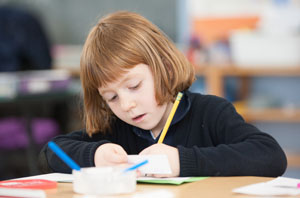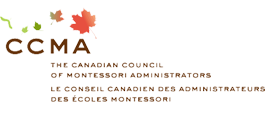Elementary Curriculum
We teach math using concrete materials and an ‘old fashioned’ approach. The regular ministry guidelines make great use of estimating and explaining the process. These things aren’t bad, but it doesn’t hurt, for example, to simply learn how to multiply fractions. Our students see, feel and therefore understand why 2/3 multiplied by 6 is equal to 4. They are doing sums and equations from grade one. They move at their own pace and actually enjoy the process. We include problem solving as well. They must understand the context within which the equation is used.
Our language area is also a powerful and important part of the curriculum. Without language we are bereft. Without language we cannot think clearly or express ourselves with confidence and accuracy. Without language, we are unable to write intelligently. Language is a fundamental need if we are to be successful in our lives.
The Montessori approach to learning language is to incorporate, as much as possible, true and factual works that will serve to increase your child’s knowledge and understanding of his world. Children are thrilled to learn as they read. They tend to approach reading as an adventure because they never know what interesting facts they will learn next.
It’s safe to say that the English language is quite a difficult language to learn. We spell words in the most amazing ways! For example, how can we justify the spelling of ‘through’? Our method gradually builds both the vocabulary and the spelling abilities of our students. It’s a process that seems painless because it starts in the CASA classroom and builds gently throughout the years.
We also teach grammar, and the children enjoy it. Obviously, our students aren’t usually allowed to stand on chairs, and yet, when they are doing the verb cards, they are asked to stand on a chair! How better to learn what a verb is than to learn through play?
By the time our students reach grade six (and often earlier than that) they should be able to take any sentence, whether in a newspaper or from a poem, and break it down to explain the parts of speech. Which words are adjectives, which are interjections and which are pronouns. When you understand grammar, you can build better sentences.
Physical Education
Our schools are small, and don’t have the benefit of large gymnasiums equipped with gymnastics equipment and a trained physical education teacher. As a result, we find other ways to offer our students a rich and varied programme of physical exercise.
It is becoming ever more important, in this society of computers and televisions, that we teach our children to value and enjoy physical exercise. We want our students to know the joy of feeling confident and competent in their physical bodies. Some of our activities have included swimming lessons, rock climbing, gymnastics, badminton, and squash. We also offer a physical education class twice a week and we go downhill skiing five Tuesdays every winter. Parents are always welcome to join us on the ski hill.
Our students enjoy a varied and active physical education program designed to develop their bodies, their love of movement, and their confidence.
Field Trips
A fundamental part of the Montessori philosophy is the idea that children learn by ‘doing’.
We supplement the curriculum with school trips that give students the opportunity to really experience what they have been reading about in the classroom.
For example, a project on Japan can focus on the currency, the food, the history, geography, and the social mores of the country. What better way to support those lessons than a trip to the Japanese Cultural Centre?
Experiencing an authentic Japanese tea ceremony, with all its grace and reverence for tradition, will work to solidify the material in their minds, leaving our students knowing more about the culture than they would by merely reading books in the classroom.
Computers, Robotics, and Coding
It’s safe to say, however, that we all need to be comfortable with the technology and confident about using a variety of programs. Our students get comfortable with both PC’s and Mac's. They learn to use Word in grade one, Excel in grade two, and PowerPoint in grade three.
We also offer programs that help children learn about robotics and coding, which in turns helps develop their logic, and understanding of cause and effect.
Homework
Much of their schoolwork is done under the watchful eyes of their teacher. We need to know that the child really understands what he’s working on. If the work is done at home, we don’t know whether the student did the work, or whether a parent was mainly responsible for the outcome.
Also, because so much of our teaching is based on concrete materials, it doesn’t make sense for the children to work at home, without the materials. We do want the students to practice their math facts (such as addition or multiplication) and, of course, read, read, read every day.
As the children move through the grades we do start to introduce more homework. One of our important responsibilities is to make sure that the transition into the regular school system is an easy one. We begin to incorporate more and more of the regular approach to education. A grade three child works primarily with the concrete Montessori materials. A grade six student thinks and works in the abstract, and often learns using regular textbooks.
Why have mixed age groups and grades in Elementary?
A by-product of these mixed age groups is the confidence and self-esteem that develop in children who move with independence from one activity to another, and who can offer assistance to their younger classmates. The teacher is not always free to help each child and as a result, the students learn to help themselves or ask their peers for assistance. Sometimes the teacher will even act as if she’s too busy to help in order to encourage the independence and problem solving that is so normal in a Montessori trained child.
The other aspect of a mixed age classroom is that students see what the older children are doing, and they want to progress. When a grade three child is working on the checkerboard, and learning about millions, the other students are likely to notice, and look forward to their own opportunity to work with this material. Imagine a classroom where students look forward to learning!




